10/07/2023 -> NO ONE informed me that what I did was illegal (Email list in 2015) when I sent an other e-mail to so much people of the Scientific Community Worldwide and to American and Brazilian Govern that I have sent the email list, informing that I didn’t ask permission to put each e-mail address on the e-mail list.
The graphics I did about ´´my´´ dissertation and ´´my´´ monograph that can be excellent references for many types of future research and projects, of course. Os gráficos que fiz sobre ´´minha´´ dissertação e ´´minha´´ monografia podem ser ótima referência para futuras pesquisas e projetos de vários tipos, com certeza.
Do the downloads!! Share!! The diffusion of very important information and knowledge is essential for the world progress always!! Thanks!!
- – > Mestrado – Dissertation – Tabelas, Figuras e Gráficos – Tables, Figures and Graphics – ´´My´´ Dissertation @ #Innovation #energy #life #health #Countries #Time #Researches #Reference #Graphics #Ages #Age #Mice #People #Person #Mouse #Genetics #PersonalizedMedicine #Diagnosis #Prognosis #Treatment #Disease #UnknownDiseases #Future #VeryEfficientDrugs #VeryEfficientVaccines #VeryEfficientTherapeuticalSubstances #Tests #Laboratories #Investments #Details #HumanLongevity #DNA #Cell #Memory #Physiology #Nanomedicine #Nanotechnology #Biochemistry #NewMedicalDevices #GeneticEngineering #Internet #History #Science #World
Pathol Res Pract. 2012 Jul 15;208(7):377-81. doi: 10.1016/j.prp.2012.04.006. Epub 2012 Jun 8.
The influence of physical activity in the progression of experimental lung cancer in mice
Renato Batista Paceli 1, Rodrigo Nunes Cal, Carlos Henrique Ferreira dos Santos, José Antonio Cordeiro, Cassiano Merussi Neiva, Kazuo Kawano Nagamine, Patrícia Maluf Cury
- PMID: 22683274
- DOI: 10.1016/j.prp.2012.04.006
Impact_Fator-wise_Top100Science_Journals
GRUPO_AF1 – GROUP AFA1 – Aerobic Physical Activity – Atividade Física Aeróbia – ´´My´´ Dissertation – Faculty of Medicine of Sao Jose do Rio Preto
GRUPO AFAN 1 – GROUP AFAN1 – Anaerobic Physical Activity – Atividade Física Anaeróbia – ´´My´´ Dissertation – Faculty of Medicine of Sao Jose do Rio Preto
GRUPO_AF2 – GROUP AFA2 – Aerobic Physical Activity – Atividade Física Aeróbia – ´´My´´ Dissertation – Faculty of Medicine of Sao Jose do Rio Preto
GRUPO AFAN 2 – GROUP AFAN 2 – Anaerobic Physical Activity – Atividade Física Anaeróbia – ´´My´´ Dissertation – Faculty of Medicine of Sao Jose do Rio Preto
Slides – mestrado – ´´My´´ Dissertation – Faculty of Medicine of Sao Jose do Rio Preto
CARCINÓGENO DMBA EM MODELOS EXPERIMENTAIS
DMBA CARCINOGEN IN EXPERIMENTAL MODELS
Avaliação da influência da atividade física aeróbia e anaeróbia na progressão do câncer de pulmão experimental – Summary – Resumo – ´´My´´ Dissertation – Faculty of Medicine of Sao Jose do Rio Preto
https://pubmed.ncbi.nlm.nih.gov/22683274/
Abstract
Lung cancer is one of the most incident neoplasms in the world, representing the main cause of mortality for cancer. Many epidemiologic studies have suggested that physical activity may reduce the risk of lung cancer, other works evaluate the effectiveness of the use of the physical activity in the suppression, remission and reduction of the recurrence of tumors. The aim of this study was to evaluate the effects of aerobic and anaerobic physical activity in the development and the progression of lung cancer. Lung tumors were induced with a dose of 3mg of urethane/kg, in 67 male Balb – C type mice, divided in three groups: group 1_24 mice treated with urethane and without physical activity; group 2_25 mice with urethane and subjected to aerobic swimming free exercise; group 3_18 mice with urethane, subjected to anaerobic swimming exercise with gradual loading 5-20% of body weight. All the animals were sacrificed after 20 weeks, and lung lesions were analyzed. The median number of lesions (nodules and hyperplasia) was 3.0 for group 1, 2.0 for group 2 and 1.5-3 (p=0.052). When comparing only the presence or absence of lesion, there was a decrease in the number of lesions in group 3 as compared with group 1 (p=0.03) but not in relation to group 2. There were no metastases or other changes in other organs. The anaerobic physical activity, but not aerobic, diminishes the incidence of experimental lung tumors.
Copyright © 2012 Elsevier GmbH. All rights reserved.
https://www.ieee.org/about/index.html
Não houve diferença estatística significativa. E agora?
https://measuringu.com/statistically-significant/
https://www.nature.com/articles/d41586-019-00874-8
http://www.gmail.com http://www.google.com http://www.yahoo.com http://www.wordpress.com http://www.harvard.edu http://www.facebook.com/scientificblog http://www.wikipedia.org http://www.princeton.edu http://www.facebook.com http://www.twitter.com http://www.youtube.com http://www.linkedin.com http://www.forbes.com
http://www.stanford.edu http://www.nobelprize.org http://www.nasa.gov http://www.mit.edu http://www.famerp.br http://www.unicamp.br http://www.ucla.edu http://www.caltech.edu http://www.michigan.edu http://www.cornell.edu http://www.yale.edu http://www.columbia.edu http://www.ox.ac.uk/ https://www.cam.ac.uk/ https://www.karolinska.se/ https://www.manchester.ac.uk/ http://cnpq.br/ https://www.jax.org/

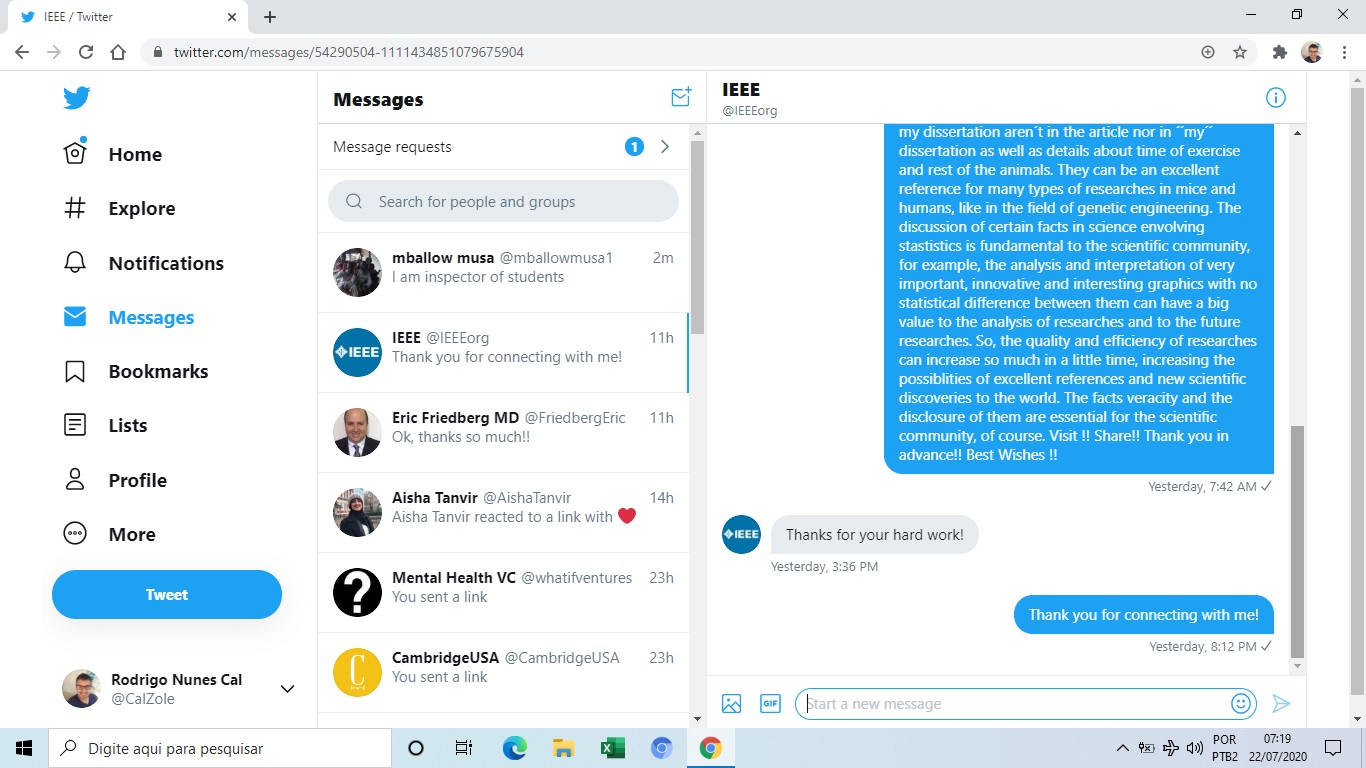







Fome é o fator que leva a célula tumoral a migrar pelo corpo, diz pesquisador | AGÊNCIA FAPESP
 Em palestra no 8º Workshop on Melanoma Models, o britânico Colin Goding falou sobre como a escassez de nutrientes pode fazer a célula tumoral parar de se proliferar e adquirir fenótipo invasivo (imagem: Sriram Subramaniam, National Cancer Institute (NCI), 2012/Wikimedia Commons)
Em palestra no 8º Workshop on Melanoma Models, o britânico Colin Goding falou sobre como a escassez de nutrientes pode fazer a célula tumoral parar de se proliferar e adquirir fenótipo invasivo (imagem: Sriram Subramaniam, National Cancer Institute (NCI), 2012/Wikimedia Commons)





























































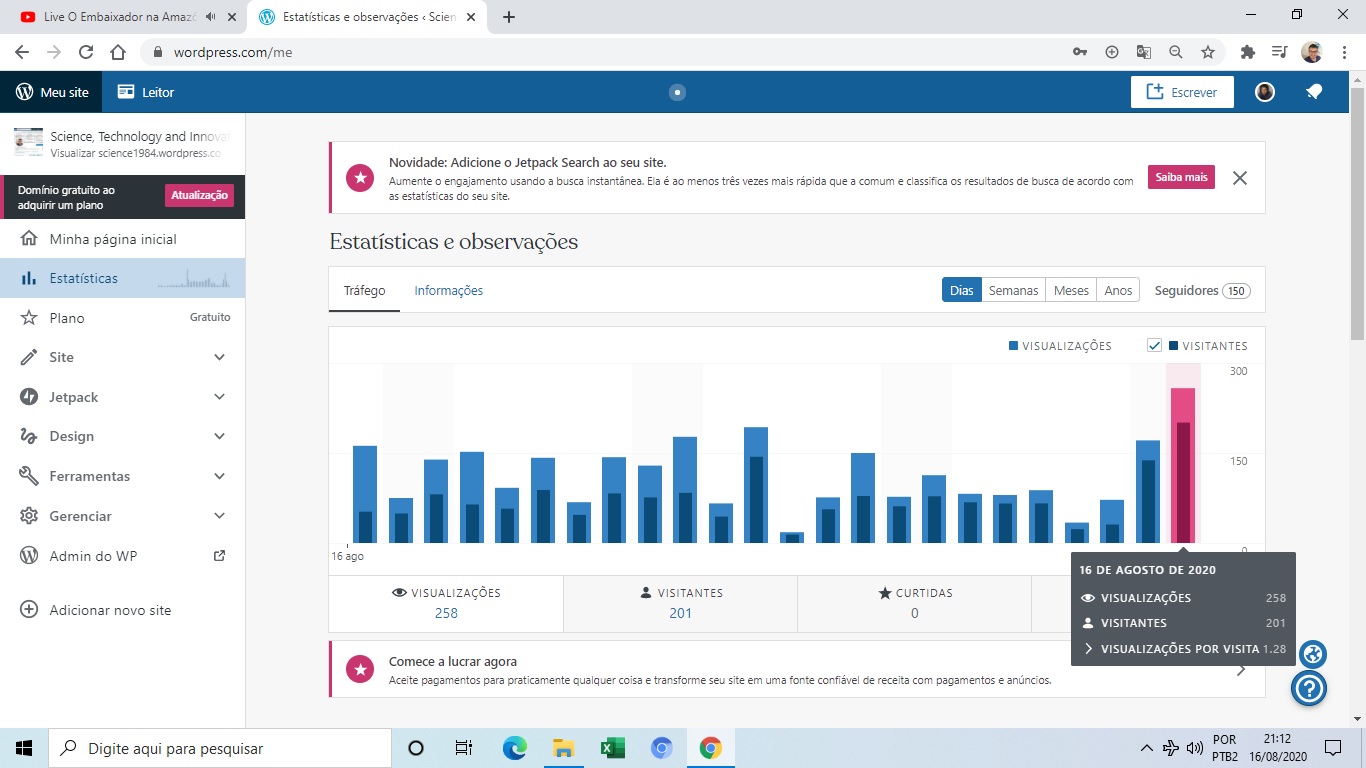
Fome é o fator que leva a célula tumoral a migrar pelo corpo, diz pesquisador
18 de agosto de 2017
Karina Toledo | Agência FAPESP – O pesquisador britânico Colin Goding está convencido de que o mesmo fator que motivou o primeiro ser vivo unicelular a se movimentar pela Terra – há mais de 3 bilhões de anos – também é a razão pela qual algumas células tumorais se separam do tumor primário para colonizar outras partes do corpo: a busca por comida.
Em seu laboratório, situado no Instituto Ludwig de Pesquisa do Câncer, vinculado à Universidade de Oxford, no Reino Unido, ele demonstrou em experimentos com culturas de melanoma humano que a falta de nutrientes desativa o maquinário de proliferação celular e faz com que as células tumorais adquiram um fenótipo invasivo.
“Nossa estimativa é que a mesma lógica funcione para a maioria dos tipos de câncer e, talvez, possamos encontrar meios de manipular esse mecanismo de sobrevivência celular para obter benefícios terapêuticos”, disse Goding em entrevista à Agência FAPESP.
De passagem por São Paulo, onde proferiu no dia 10 de agosto a palestra de abertura do 8º Workshop on Melanoma Models, Goding contou que seu grupo tem usado o melanoma como um modelo para entender a progressão do câncer como um todo.
“É um ótimo modelo porque conseguimos visualizar todos os estágios da doença. Podemos perceber quando as células produtoras de pigmento começam a invadir outros tecidos e formar metástases. Já em outros tipos de tumor, como pulmão ou pâncreas, quando o paciente apresenta sintomas e procura um médico a doença já se espalhou”, comentou.
Outro fator que tornou o melanoma um modelo interessante para o estudo do câncer, segundo Goding, foi a identificação, há mais de uma década, de um gene chamado BRAF, que se encontra alterado em metade dos casos da doença – emitindo estímulos para a proliferação descontrolada das células.
“Em poucos anos surgiram drogas capazes de inibir especificamente essa forma ativa do gene BRAF com efeitos dramáticos. Pacientes com múltiplas metástases respondiam muito bem. Porém, após alguns meses, as células se tornavam resistentes. Nossa pergunta então foi: por que essa resistência surge e o que podemos fazer a respeito?”
Transformação do fenótipo
De acordo com Goding, estudo recentes têm mostrado que a resistência do melanoma ao tratamento está relacionada com a existência, dentro de um mesmo tumor, de subpopulações de células com fenótipos diferentes. Ou seja, embora possuam o mesmo background genético, se comportam de forma distinta.
“Algumas podem estar mais diferenciadas e se comportar como o tecido de origem [células produtoras de melanina], outras podem estar se proliferando rapidamente e fazendo o tumor crescer, outras podem estar com o ciclo mais lento e fenótipo invasivo e outras se tornam dormentes e permitem que, mesmo após uma terapia bem-sucedida, a doença reapareça muitos anos depois”, explicou Goding.
Um dos objetivos do grupo britânico, portanto, tem sido compreender os fatores que levam ao surgimento desses diferentes fenótipos. Segundo Goding, aspectos do microambiente tumoral, como a disponibilidade de nutrientes, oxigênio e a interação com sinais emitidos pelo sistema imune, são fundamentais para a transformação.
A hipótese levantada pelo britânico é que, diante de uma situação de escassez de nutrientes, ativa-se em parte das células tumorais um mecanismo de sobrevivência que as faz migrar para procurar comida em outro local.
“Além disso, acreditamos que determinados sinais emitidos por células do sistema imune – como as citocinas TNF-α [Fator de necrose tumoral alfa] e TGF-β [Fator de transformação do crescimento beta] – podem induzir um estado de pseudodesnutrição. Nesse caso, mesmo havendo abundância de nutrientes, esses sinais imunes associados à inflamação acionam o mesmo mecanismo induzido pela fome e fazem a célula migrar”, explicou o cientista.
Experimentos feitos por Goding com leveduras e também com células de melanoma confirmaram que existe um mecanismo de sobrevivência celular conservado ao longo da evolução. Quando passa fome, a célula reduz sua demanda por nutrientes para se adequar à oferta. Isso significa desativar os processos biológicos necessários para a síntese de proteínas e para a formação de novas células.
Porém, quando a célula tumoral consegue migrar para um novo ambiente, onde há abundância de nutrientes e ausência dos sinais imunes que induzem a pseudodesnutrição, ela volta a se proliferar para formar uma nova colônia.
“Se conseguirmos enganar as células para fazer com que acreditem que os sinais de estresse já foram embora, o maquinário de fazer novas células volta a ficar ativo e elas vão morrer porque a demanda por nutrientes vai exceder a oferta”, avaliou.
A manipulação do estado fenotípico da célula tumoral, segundo Goding, poderia, em teoria, evitar tanto a formação de metástase como a ocorrência de futuras recaídas da doença.
“O processo de formação de metástase é muito ineficiente. Deve haver centenas de milhares de células tumorais circulando e algumas poucas conseguem estabelecer uma nova colônia com sucesso. Parte dessas células morre e parte se torna dormente para sobreviver ao estresse associado com a fuga do tumor primário. Se encontrarmos um mecanismo para eliminar a dormência, poderemos reduzir ainda mais o porcentual de células que consegue escapar do tumor primário, sobreviver e formar metástase. Isso é algo que buscamos em meu laboratório, em colaboração com grupos do mundo todo, inclusive o de Silvya Stuchi, no Brasil”, contou.
Republicar
A Agência FAPESP licencia notícias via Creative Commons (CC-BY-NC-ND) para que possam ser republicadas gratuitamente e de forma simples por outros veículos digitais ou impressos. A Agência FAPESP deve ser creditada como a fonte do conteúdo que está sendo republicado e o nome do repórter (quando houver) deve ser atribuído. O uso do botão HMTL abaixo permite o atendimento a essas normas, detalhadas na Política de Republicação Digital FAPESP.
ÚLTIMAS NOTÍCIAS
MAIS LIDAS DO MÊS
Genome Sequencing: Key to solving India’s rare diseases problem
The country recently having concluded a six-month pilot project of genome sequencing of Indians, the solution to the problem of rare diseases may just be around the corner.
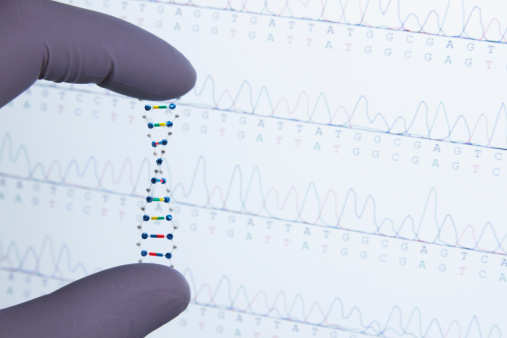
According to the Indian Council of Medical Research (ICMR), a rare disease is something that affects 1 in 2,500 individuals. As much as 80% of these including genetic disorders, rare cancers, infectious tropical diseases and degenerative diseases are serious, chronic, debilitating and life threatening. They require long-term and specialized treatment and management. Over time, in the absence of intervention, they can lead to some form of severe handicap. Rare diseases also impact children disproportionately and are responsible for 35% of deaths before the age of 1 year. All this can have a huge impact on families both emotionally and financially given the high cost of treatment. Another aspect to consider is the lack of reliable genetic data in the country. However, a breakthrough achieved six months ago is going to significantly alter the landscape of rare diseases diagnosis in India. With the country recently having concluded a six-month pilot project of genome sequencing of Indians, the solution to the problem of rare diseases may just be around the corner.
A genome is defined as a person’s complete set of DNA, including genes with more than 3 billion DNA base pairs. Genome sequencing can make it possible to discover the functions of genes and identify mutations responsible for conditions like cancer. The process is set to help parents undergo carrier screening and identify diseases that can be inherited. The three million bases making up the DNA sequence of our genomes help in understanding evolution, similarities and differences between two individuals.
Data generated through genome sequencing can help assess a person’s genetic tendencies to health conditions, diagnose inheritable cancers, and enable the development of tests to prevent adverse drug reactions. Some examples include prenatal genetic testing for expectant couples for detecting genetic disorders, predictive genetic testing that can diagnose inheritable cancers, etc. In short, the possibility to medically treat patients as per their unique genetic profiles becomes immense.
Genome sequencing can become a prognostic and diagnostic tool by helping understand specific things about the Indian gene pool. This can further bring down treatment costs significantly for many. It will also enhance the likelihood of offering precision medicine rather than giving medication based on other parameters. For instance, in previous genomic studies that were conducted in India, there were genes uncovered that were exclusive to the Indian population and presented the unique risk in developing diabetes. When such risks are known, they can help the healthcare system and government policy makers to make more informed decisions around disease prevention and treatment.
In conclusion
Genome sequencing can help determine the role of individual genes and how they cause diseases. There are diagnostic tests available today that make use of the latest technology and reporting to give reliable data. The use of precision medicine and the data-pool gathered through such an approach will go a long way in solving the issue of rare diseases in our country.
It is important to note that genomic data is sensitive and therefore, efforts are also needed in the direction of minimizing the likelihood of data breaches. This will help maintain public trust in institutions which gather and store human genome data for analytical purposes. India is currently on the brink of a major breakthrough – one that comes as a ray of hope for families at the risk of rare and undiagnosed medical conditions. This is because with definitive diagnosis, not only will our understanding of diseases grow but this will further fuel the hope for a better future.
(The author is the COO & CO-Founder, Redcliffe Life Sciences.)
DISCLAIMER: The views expressed are solely of the author and ETHealthworld.com does not necessarily subscribe to it. ETHealthworld.com shall not be responsible for any damage caused to any person/organisation directly or indirectly.

Editor’s Picks ›
One step closer to understanding the human brain : Study / Nutraceuticals in India: A game changing opportunity in the healthcare and food industry / Everolimus-Eluting Stent stands superior to other stents for treatment of diabetic patients in India: Dr Ashok Seth / The ‘opt-out’ system doesn’t convert into organ donation: Dr. Avnish Seth / Fractional Flow Reserve (FFR) is an ideal tool for cardiologists to make the right decision: Dr Nils P Johnson / New insights into evolution: why genes appear to move around / World Obesity Day: ‘Insurance cover for bariatric surgery in India continues to be an unknown fact’ / Sridhar Venkatesh appointed as Managing Director & VP of GSK India / Genome Sequencing: Key to solving India’s rare diseases problem / Combating Coronavirus
Features ›
IndustrySpeak / Data & Analytics / HealthTV / Webinars / Events / Opinions / Interviews / Innovations / Trends / Startups / Oncology / Cardiology / Neurology / Oral Care / Diabetology / Data / Reports / Webcast
Other B2B News Sites ›
Retail News / Auto News / Telecom News / Energy News / IT News / Real Estate News / Marketing & Advertising News / Technology News / CFO News / IT Security News / BFSI News / Government News
Cookie Notice
We use cookies to personalise content and ads, to provide social media features and to analyse our traffic. We also share information about your use of our site with our social media, advertising and analytics partners in accordance with our Privacy Policy. You can manage your preferences in ‘Manage Cookies’.
NEWS
CRISPR treatment inserted directly into the body for first time
The human retina: a CRISPR therapy has been inserted directly into a person for the first time — in the eye.Prof. P. Motta/Dept. of Anatomy/University La Sapienza of Rome/SPL
A person with a genetic condition that causes blindness has become the first to receive a CRISPR–Cas9 gene therapy administered directly into their body.
The treatment is part of a landmark clinical trial to test the ability of CRISPR–Cas9 gene-editing techniques to remove mutations that cause a rare condition called Leber’s congenital amaurosis 10 (LCA10). No treatment is currently available for the disease, which is a leading cause of blindness in childhood.
For the latest trial, the components of the gene-editing system – encoded in the genome of a virus — are injected directly into the eye, near photoreceptor cells. By contrast, previous CRISPR–Cas9 clinical trials have used the technique to edit the genomes of cells that have been removed from the body. The material is then infused back into the patient.
“It’s an exciting time,” says Mark Pennesi, a specialist in inherited retinal diseases at Oregon Health & Science University in Portland. Pennesi is collaborating with the pharmaceutical companies Editas Medicine of Cambridge, Massachusetts, and Allergan of Dublin to conduct the trial, which has been named BRILLIANCE.
Mutation eradication
This is not the first time gene editing has been tried in the body: an older gene-editing system, called zinc-finger nucleases, has already been administered directly into people participating in clinical trials. Sangamo Therapeutics of Brisbane, California, has tested a zinc-finger-based treatment for a metabolic condition called Hunter’s syndrome. The technique inserts a healthy copy of the affected gene into a specific location in the genome of liver cells. Although it seems to be safe, early results suggest it might do little to ease the symptoms of Hunter’s syndrome.
But the BRILLIANCE trial is the first to deploy the popular CRISPR–Cas9 technique — which has been hailed for its versatility and ease of design — directly in the body. In BRILLIANCE, gene editing is used to delete a mutation in the gene CEP290 that is responsible for LCA10.
The condition is a particularly attractive target for a gene-editing approach. Conventional gene therapies use a virus to insert a healthy copy of the mutated gene into affected cells. But CEP290 is too large to slip the entire gene into a viral genome, says Artur Cideciyan, who studies retinal diseases at the University of Pennsylvania in Philadelphia.
And although mutations in CEP290 disable light-sensing cells called photoreceptors in the retina, the cells are still present and alive in people with LCA10. “The hope is that you can reactivate those cells,” says Pennesi. “This is one of the few diseases where we think you could actually get an improvement in vision.”
Early results from another therapy suggest that this might be the case. Cideciyan has teamed up with ProQR of Leiden, the Netherlands, to treat people with LCA10 using an experimental treatment called sepofarsen. Early results suggest that sepofarsen, which uses a technique called antisense therapy to correct an LCA10-causing mutation in RNA made from the CEP290 gene, can improve vision in people with LCA10.
For now, the use of CRISPR–Cas9 in the body is a significant jump from treating cells in a dish, says Fyodor Urnov, who studies genome editing at the University of California, Berkeley. “It is akin to space flight versus a regular plane trip,” he says. “The technical challenges, and inherent safety concerns, are much greater.”
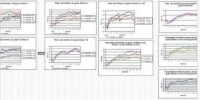





 Daytime sleepiness linked with diabetes, cancer risk in elderly: Study
Daytime sleepiness linked with diabetes, cancer risk in elderly: Study Advanced imaging tools transforming Heart Care
Advanced imaging tools transforming Heart Care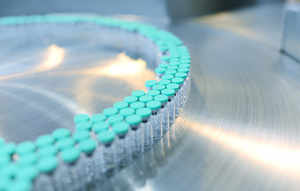 World pharma supplier India restricts export of some ingredients, drugs
World pharma supplier India restricts export of some ingredients, drugs Strengthen health systems to prevent, detect and treat birth defects
Strengthen health systems to prevent, detect and treat birth defects






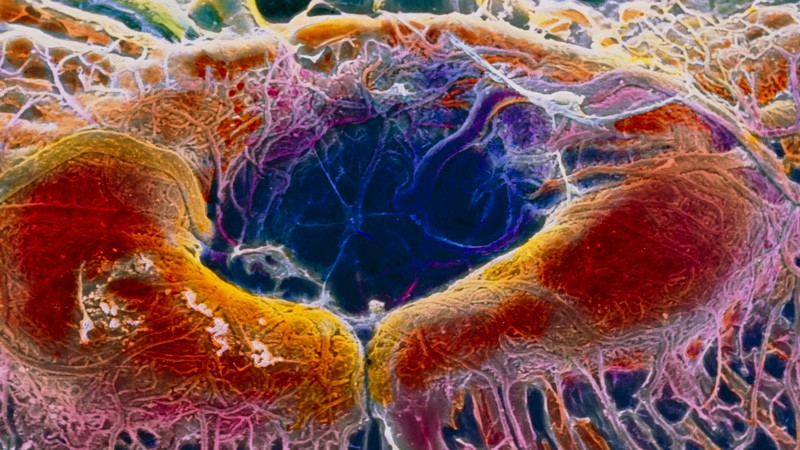


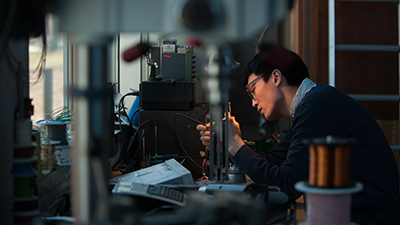




things, therefore I am going to
LikeLike
I am sure this post has touched all the
LikeLike
I?ve read this post and if I could I desire to suggest you few interesting things or advice. Perhaps you can write next articles referring to this article. I desire to read more things about it!
LikeLike
make a few plans for the longer term and it?s time to be happy. I have read this
LikeLike
It?s perfect time to make some plans for the future and it?s time to be happy.
LikeLike
I want to read even more things approximately
LikeLike
post plus the rest of the website is also really good.
LikeLike
It is the best time to make some plans for the future and it?s time to be happy.
LikeLike
I?ve read this post and if I could I want to suggest you some interesting things or advice. Maybe you can write next articles referring to this article. I wish to read more things about it!
LikeLike
It is appropriate time to make some plans for the future and it is time to be happy.
LikeLike
It is perfect time to make some plans for the future and it is time to be happy.
LikeLike
Wow, this paragraph is good, my sister is analyzing these
LikeLike
I have read this post and if I could I wish to suggest you few interesting things or tips. Maybe you could write next articles referring to this article. I want to read even more things about it!
LikeLike
I desire to learn even more things about
LikeLike
tell her.
LikeLike
submit and if I could I wish to counsel you some fascinating issues or advice.
LikeLike
things, thus I am going to
LikeLike
internet visitors, its really really good paragraph on building up new blog.|
LikeLike
convey her.
LikeLike
things, thus I am going to
LikeLike
Wow, this post is good, my younger sister is analyzing these
LikeLike
Wow, this post is good, my sister is analyzing these kinds of
LikeLike
I am sure this piece of writing has touched all the
LikeLike
internet viewers, its really really nice piece of writing on building up new website.|
LikeLike
internet users, its really really fastidious article on building up new webpage.|
LikeLike
internet visitors, its really really pleasant article on building up new web site.|
LikeLike
convey her.
LikeLike
things, so I am going to
LikeLike
things, therefore I am going to
LikeLike
convey her.
LikeLike
things, so I am going to
LikeLike
things, thus I am going to
LikeLike
I am sure this paragraph has touched all the
LikeLike
things, therefore I am going to
LikeLike
things, thus I am going to
LikeLike
Does your site have a contact page I m having trouble locating it but, Id
LikeLike
like to shoot you an email. Ive got some creative ideas for your blog you might be interested in hearing. Either way, great blog and I look forward to seeing it expand over time.|
LikeLike
if all web owners and bloggers
LikeLike
I really like what you guys are up too. This type of clever work and exposure! Keep up the terrific works guys I’ve you guys to our blogroll.
LikeLike
Your blog doesn’t display appropriately on my iphone – you might want to try and repair that
LikeLike
Secure Drug Shop [url=https://viacialisns.com/]Cialis[/url] Cialis 5mg Dosierung Erfahrungen buy cialis generic Controindicazioni Per Il Cialis
LikeLike
Like!! Really appreciate you sharing this blog post.Really thank you! Keep writing.
LikeLike
Let me know SnG Vapor vaporizer store located in 489 Acadie Ave sells eliquid manufactured by Prickly Smooth Black? I have tried sending them an email at at coyotevape@gmail.com
LikeLike
There is certainly a great deal to find out about this
subject. I love all of the points you made.
LikeLike
I am in fact grateful to the owner of this web site who has shared this wonderful post at at this time. https://slotagree.com
LikeLike